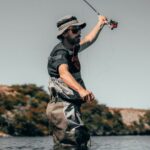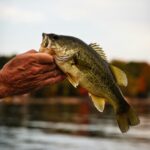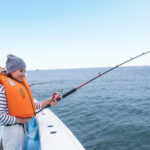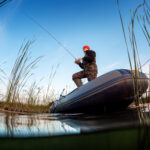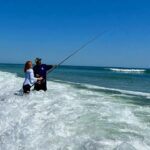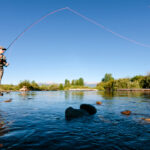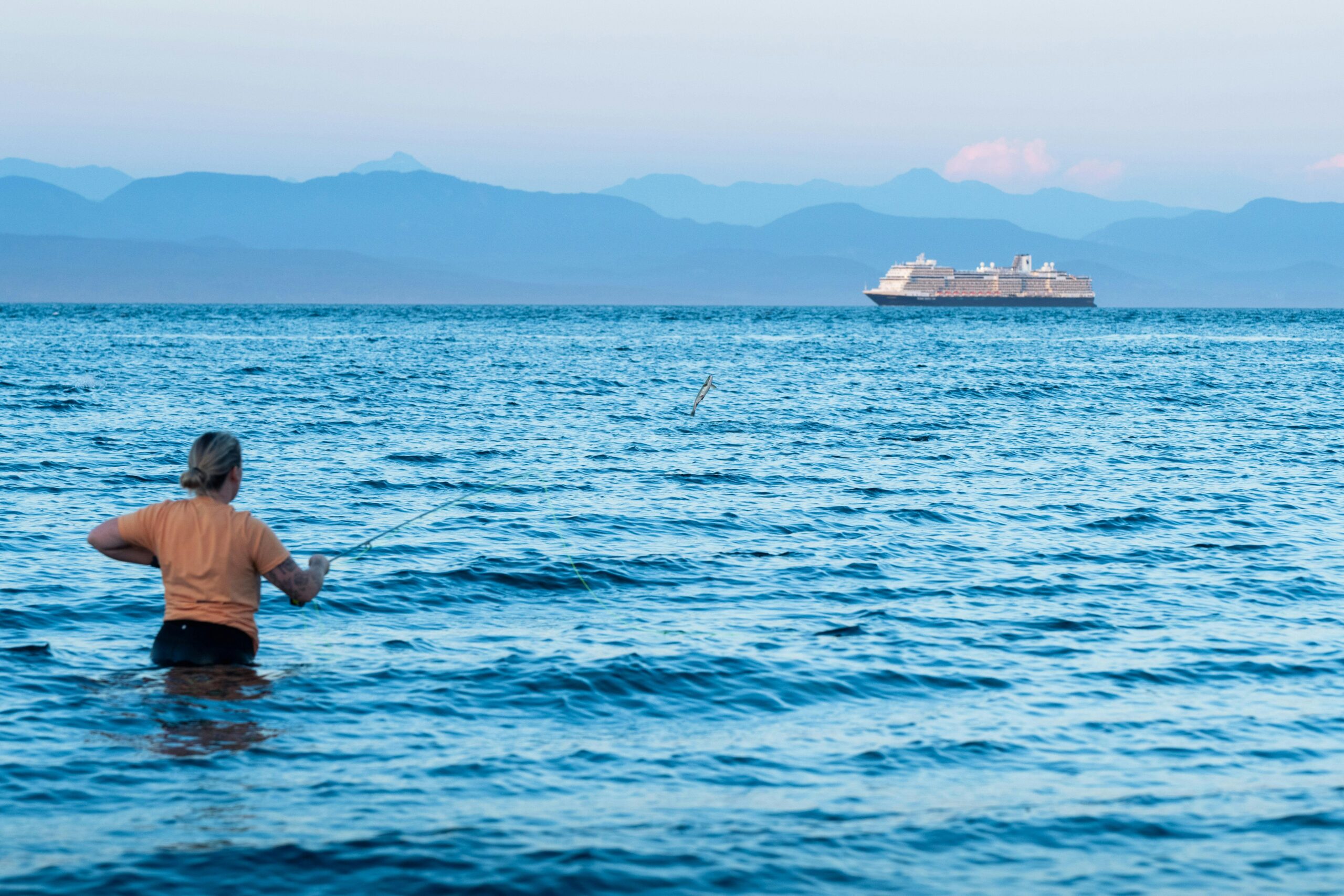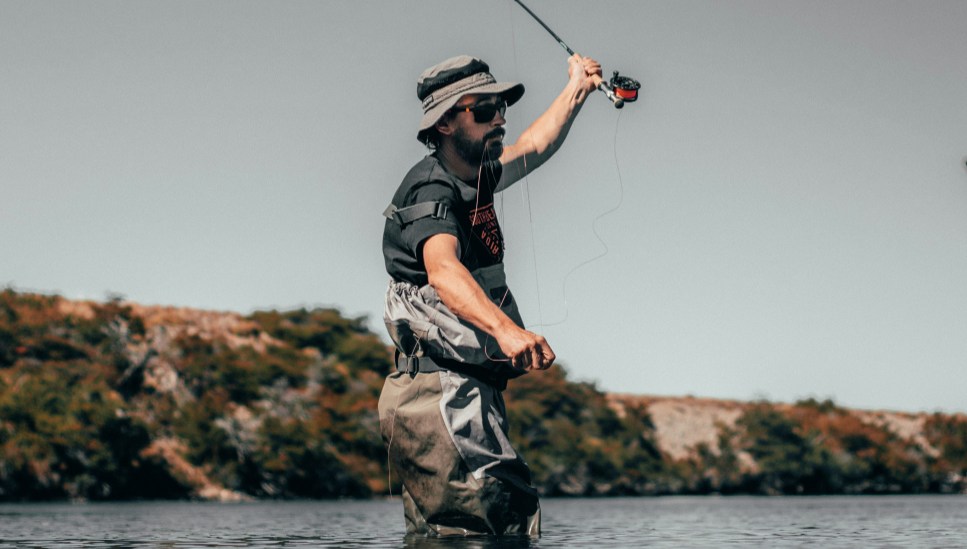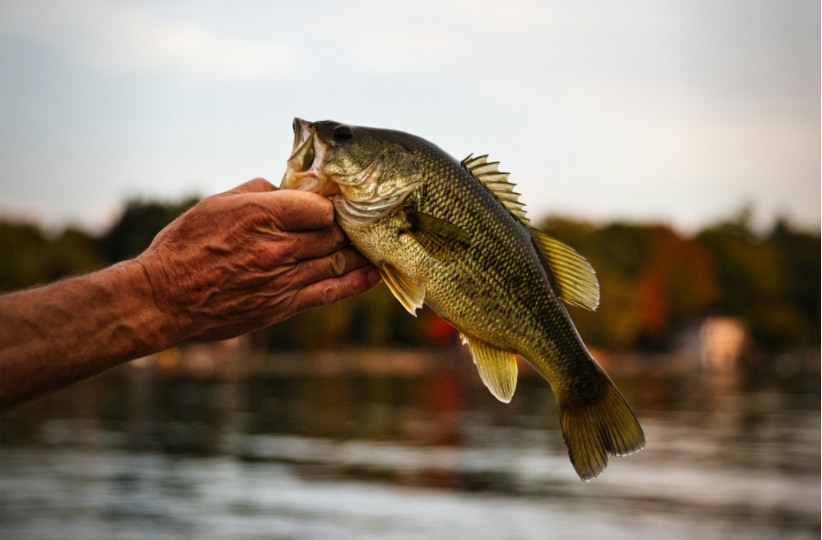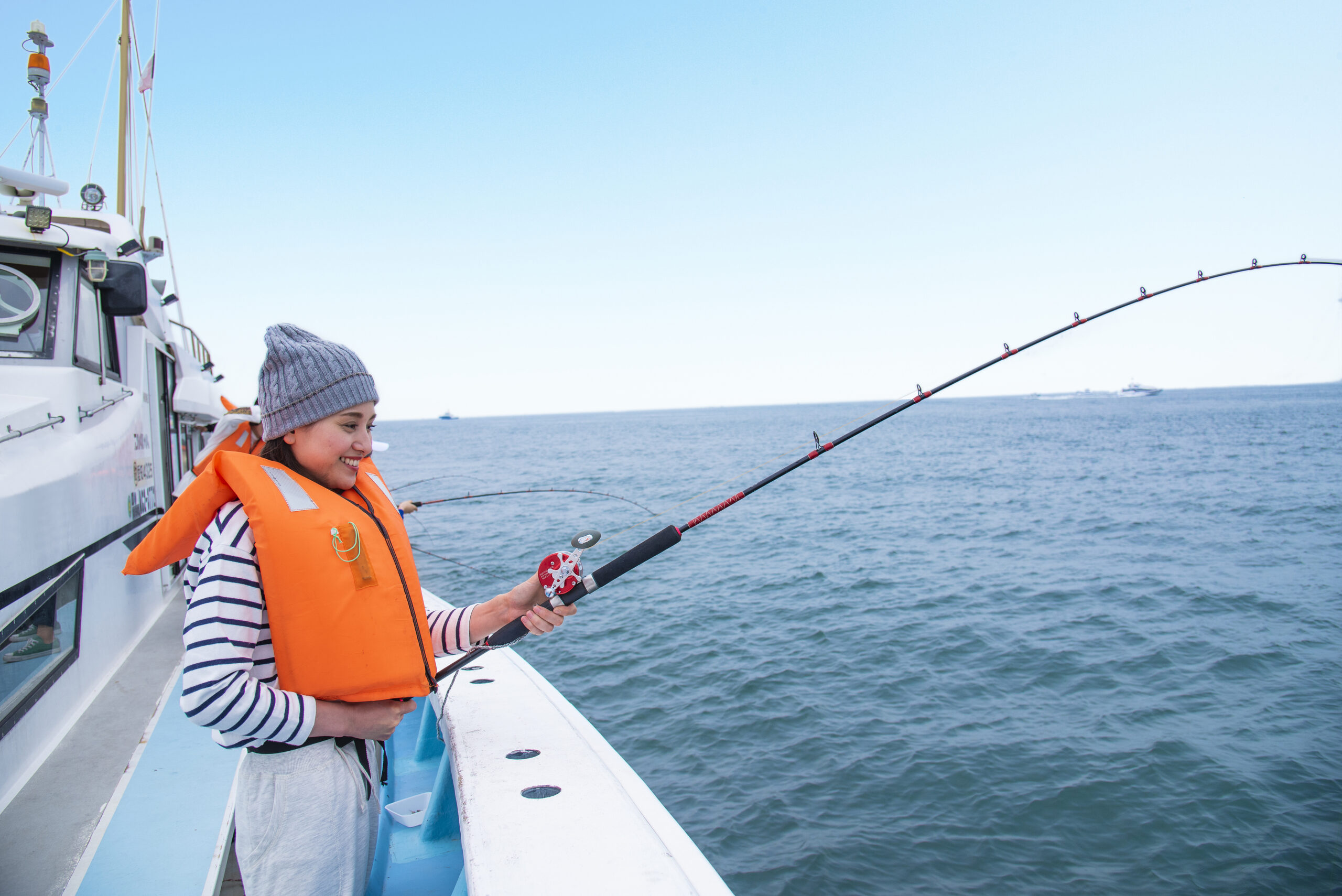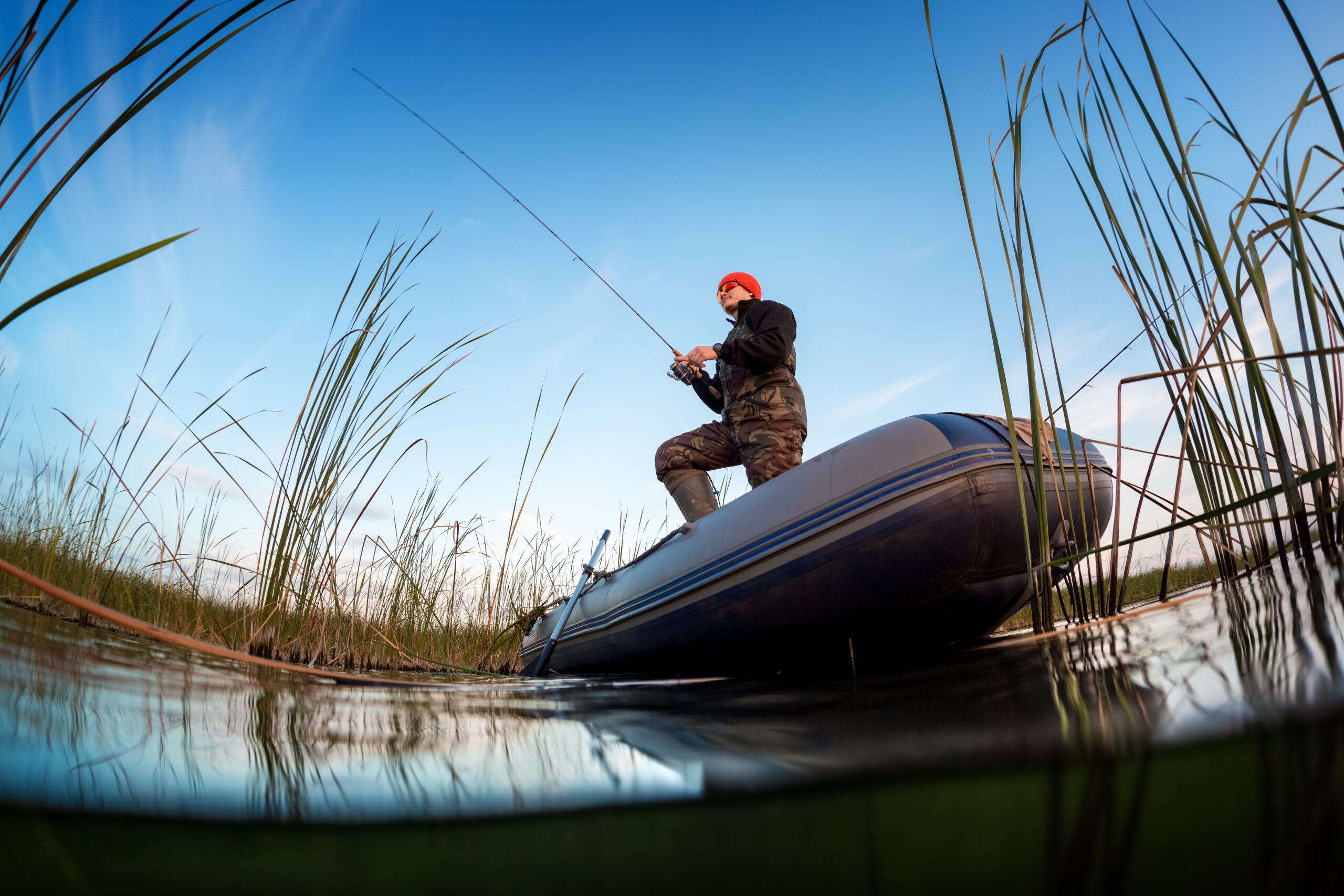Saltwater fishing, or sea fishing, offers an exhilarating and diverse experience for anglers. Whether you’re casting from a pier, fishing from a boat, or even venturing out on a kayak, the ocean presents unique challenges and rewards that make it a beloved pastime for both beginners and seasoned pros. From the peaceful beauty of the coast to the adrenaline rush of reeling in a big catch, saltwater fishing provides unforgettable moments.
If you’re new to saltwater fishing or want to refine your technique, this comprehensive guide will cover everything you need to know: the different types of saltwater fishing, the best gear for the job, effective fishing techniques, and expert tips to help you increase your chances of success.
Different Types of Saltwater Fishing
Before heading out to the water, it’s essential to understand the various types of saltwater fishing that you can engage in. Each offers its own set of challenges and rewards.
1. Shore Fishing
Shore fishing, or surfcasting, is an ideal way for beginners to start. It involves fishing from the beach or a pier, casting into the surf where fish congregate. It’s an affordable way to fish as you don’t need a boat, and you can target species like striped bass, redfish, and flounder.
2. Boat Fishing
Boat fishing is popular for targeting larger species like marlin, tuna, and sailfish. Offshore boat fishing requires specialized knowledge about navigation, tides, and boat handling. For a more relaxed experience, nearshore fishing can yield species like snapper and grouper.
3. Kayak Fishing
Kayak fishing combines the serenity of paddling with the thrill of fishing. Kayaks allow you to access areas that larger boats can’t reach, such as shallow flats and remote fishing spots. Kayak fishing is a great way to explore areas with less pressure from other anglers and target species like snook, redfish, and flounder.
4. Fly Fishing
Saltwater fly fishing is an advanced technique that requires specific skills and gear. It involves casting a lightweight fly into the water to mimic prey, such as shrimp, crabs, or small baitfish. Common targets for saltwater fly fishing include bonefish, tarpon, and permit.
Essential Gear for Saltwater Fishing
The gear you choose can make or break your fishing experience. Saltwater environments are tough on equipment, so it’s essential to use the right tools to withstand the harsh conditions. Below is a breakdown of the must-have gear for saltwater fishing.
1. Rod and Reel
The rod and reel you use depend on the type of fishing you’re doing, the species you’re targeting, and the conditions you’ll be facing.
- Rod: Saltwater rods are typically stronger and more durable than freshwater rods, as they need to withstand the corrosive effects of saltwater and the force of larger fish. Choose a rod designed specifically for saltwater fishing, typically ranging from 7 to 12 feet in length for boat fishing or 8 to 12 feet for shore fishing.
- Reel: Saltwater reels should be corrosion-resistant and built to handle the size and power of ocean fish. Spinning reels are a popular choice for beginners, while baitcasting reels are more suited for experienced anglers targeting larger fish. Look for reels made with stainless steel, aluminum, or titanium parts.
2. Fishing Line
In saltwater fishing, you’ll need a robust fishing line. For larger fish, braided lines offer strength, sensitivity, and minimal stretch. A 20- to 50-pound test braided line is a good option for most inshore fishing, while offshore anglers may prefer lines with higher pound test ratings (80-100 pounds) for big-game species.
3. Hooks and Lures
Saltwater hooks are typically stronger and more corrosion-resistant than freshwater hooks. Use hooks designed for the species you’re targeting. For example, circle hooks are great for catching fish like snapper, while J-hooks are better for larger fish like tuna or shark.
- Lures: Saltwater lures come in various styles, including jigs, plugs, spinners, and soft plastics. Jigs are perfect for targeting species like grouper and snapper, while plugs and spinners are effective for attracting pelagic species like king mackerel or barracuda.
- Bait: Live or cut bait is often more effective in saltwater fishing. Popular choices include live shrimp, mullet, squid, and sardines.
4. Tackle Box and Accessories
A good tackle box is essential for organizing your hooks, lures, bait, and other fishing tools. Accessories like pliers, a fish scaler, line cutters, and a measuring tape will make your fishing experience more efficient.
5. Sun Protection
When fishing under the hot sun, sun protection is a must. Use a wide-brimmed hat, polarized sunglasses, sunscreen, and fishing gloves to protect yourself from the sun’s harmful rays.
Techniques for Successful Saltwater Fishing
Now that you have the gear, let’s explore some common techniques that can improve your chances of catching fish.
1. Tidal Knowledge
Understanding tides is crucial in saltwater fishing. Fish tend to be more active during specific tidal phases—generally around the high and low tides. The rising tide brings in food sources for fish, and many species move closer to shore. Conversely, the outgoing tide can create opportunities for targeting species like redfish that feed along the flats and estuaries.
2. Drift Fishing
Drift fishing involves allowing your bait or lure to float naturally with the current, making it ideal for offshore fishing. This technique allows the bait to reach the right depths without the need for casting or retrieving constantly. It’s an effective technique for targeting bottom-dwelling species like snapper, grouper, and sea bass.
3. Bottom Fishing
Bottom fishing is used to target fish that dwell near the ocean floor, such as cod, snapper, and grouper. Drop your baited hook directly to the bottom using a weighted rig, and wait for the fish to bite. This method works well in both deep-sea and inshore areas.
4. Topwater Fishing
For more action-packed fishing, topwater fishing is a thrilling option. This technique involves using surface lures, like poppers or walk-the-dog lures, to attract fish on the water’s surface. Species like striped bass, bluefish, and tarpon are known to strike at topwater lures.
5. Live Bait Fishing
Using live bait can be extremely effective in saltwater fishing. Many fish species are more likely to bite on live bait like shrimp, small fish, and squid. Whether you’re using a live bait rig from a boat or free-lining from the shore, this technique increases your chances of enticing larger fish.
Safety and Conservation Tips
Fishing in saltwater environments can be unpredictable, so it’s essential to prioritize safety and conservation.
- Wear a Life Jacket: If you’re fishing from a boat or kayak, always wear a life jacket, especially if you’re unfamiliar with the area or the weather conditions.
- Stay Hydrated: The sun can dehydrate you quickly, especially in coastal areas. Drink plenty of water to stay hydrated throughout your fishing trip.
- Catch and Release: Follow sustainable fishing practices by practicing catch and release, especially with endangered species like certain shark species and gamefish like marlin and swordfish.
- Respect Local Regulations: Always check the local fishing regulations before heading out. These regulations help protect fish populations and preserve the health of the marine ecosystem.
Final Thoughts
Saltwater fishing offers endless opportunities for adventure, relaxation, and connection to nature. Whether you’re fishing from the shore, a boat, or a kayak, understanding the right techniques, gear, and local conditions will increase your chances of landing that big catch. By respecting the environment, following local regulations, and continually refining your skills, you can enjoy saltwater fishing for years to come.
So, whether you’re planning a coastal getaway or just heading out for a weekend fishing trip, remember: the ocean is full of mysteries, and the perfect catch could be just a cast away. Happy fishing!

